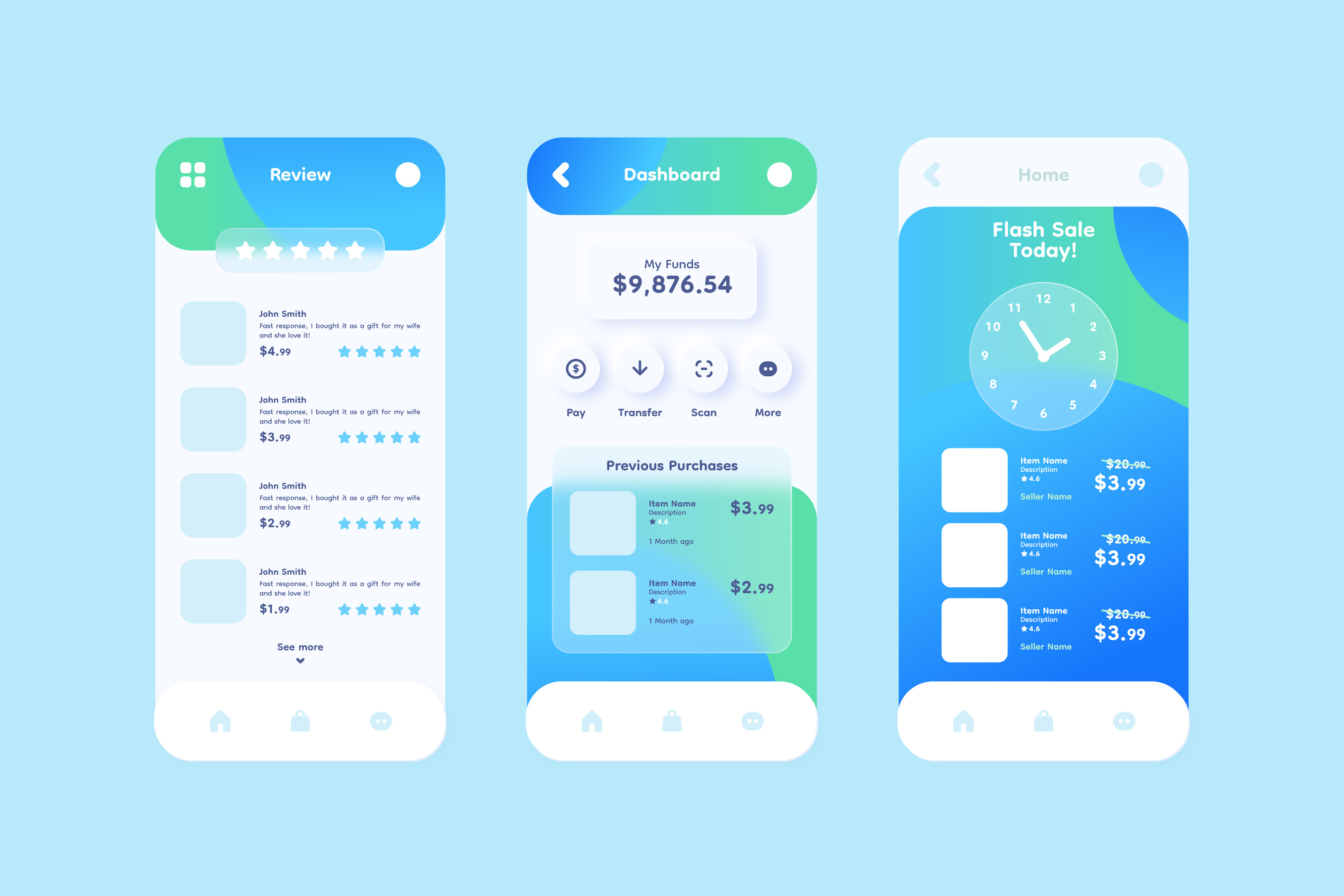UI/UX Development and Its Need
UI/UX design for a mobile app is a crucial aspect of creating a successful and engaging product. UI (User Interface) design focuses on the visual and interactive elements of the app, while UX (User Experience) design emphasizes the overall user journey and satisfaction. Both are essential for ensuring the app is intuitive, functional, and enjoyable for users.
- User-Centered Design: UI/UX design starts with understanding the target audience and their needs. Designers create personas and conduct user research to comprehend user behaviors, preferences, and pain points. This information guides design decisions throughout the process.
- Wireframing and Prototyping: Designers create wireframes, which are basic, skeletal layouts representing the app's structure. These evolve into interactive prototypes, allowing stakeholders to visualize the app's flow and interactions. Prototyping helps in identifying and resolving design issues early in the development cycle.
- Visual Design: Visual design involves selecting the appropriate color schemes, typography, icons, and images that align with the brand identity and resonate with the target audience. Consistent visuals enhance the app's aesthetic appeal and reinforce the brand.
- Responsive Design: Mobile devices come in various screen sizes and resolutions. UI/UX designers must ensure that the app's design is responsive, adapting seamlessly to different screen sizes while maintaining usability and visual appeal.
- Intuitive Navigation: An intuitive and well-structured navigation system is crucial for an app's success. Users should easily find what they're looking for and move effortlessly through the app. Clear and logical navigation enhances the overall user experience.
- Feedback and Iteration: Gathering user feedback through usability testing and analytics is key. Designers use this feedback to identify areas for improvement and iterate on the design to address user concerns and enhance the app's usability.
- Accessibility: Designing for accessibility ensures that the app is usable by individuals with disabilities. This involves providing alternative text for images, ensuring readable font sizes, and considering color contrast for those with visual impairments.
- Loading Speed and Performance: Optimizing the app's design for fast loading times and smooth performance is essential for retaining users. Slow-loading apps or those prone to crashes frustrate users and drive them away.

Need for UI/UX Design in a Mobile App
-
Enhanced User Satisfaction: Good UI/UX design creates a positive and enjoyable user experience, resulting in higher user satisfaction and increased user retention.
-
Competitive Advantage: In a crowded market, a well-designed app can differentiate itself from competitors and attract more users.
-
Increased Engagement: Intuitive and visually appealing designs keep users engaged, encouraging them to spend more time on the app and explore its features.
-
Higher Conversion Rates: A well-optimized UI/UX design can lead to higher conversion rates, whether it's signing up for a service, making a purchase, or any other desired action.
-
Reduced Development Costs and Time: By addressing potential usability issues early in the design process, the development team can avoid costly rework and delays.
In summary, UI/UX design is fundamental to creating a successful mobile app that not only looks attractive but also offers a seamless and enjoyable experience for the users, ultimately driving the app's success and user satisfaction.
